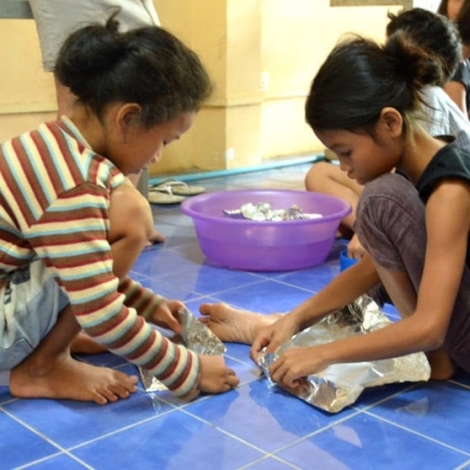Do-it-yourself building attracts aid organizations as a low-cost way to distribute technology. All you have to do is post directions online or maybe gather text books for a small library and then anyone can build a community water chlorinator or a composting pit latrine. Nothing could go wrong, right? But, of course, if that were true then the world would be full of solar ovens and water heaters.
One of the hurdles in DIY technology is a lack of cultural support. A missing DIY culture can take some of the blame for the high cost of introducing technologies in developing countries, as Khanjan Mehta, a contributing editor at E4C and head of the Humanitarian Engineering and Social Entrepreneurship program at Penn State, put it in a recent Big Design Questions post.
Planting a DIY cultural seed probably coincides with capacity building, the efforts to train people how to operate, maintain, repair and build machines that meet their basic needs. Maker spaces and other community sharing programs teach through learning by doing and knowledge sharing, placing them at the center of the venn diagram of capacity building and fomenting DIY culture.
One organization in Cambodia takes the long view towards capacity building by improving the way that school children learn about science and engineering. We think it may also lay a few bricks in the foundation of a DIY culture.
The firm Advancing Engineering Consultants guides infrastructure building projects in Africa and Southeast Asia, and it shares some of the basics of its work as hands-on lessons and a book for school kids in Cambodia.
“We go around and do several engineering workshops every year where we present the book then do some hands-on activities like building a bridge out of straws, a small flashlight, etc.” Bryse Gaboury, the cofounder and managing director of the firm, told E4C. [Gaboury also presented a webinar at E4C on rural development consulting.]
The kids make things like hot air balloons and structures that float in tubs of water. The book, “Buildings and Bridges,” illustrates the basics of engineering in full color, with real-world examples.
Gaboury doesn’t mention DIY culture building, but this kind of early education intervention can have a long-term impact, and not all of it may be measurable on a multiple choice test. We’re hoping that some of these kids may be the ones who post tutorial videos online to teach the rest of us how to build something ourselves.

The cover and two inside pages of the bilingual book “Buildings and Bridges” teaches the basics of engineering to kids in Cambodia. Images courtesy of Bryse Gaboury

